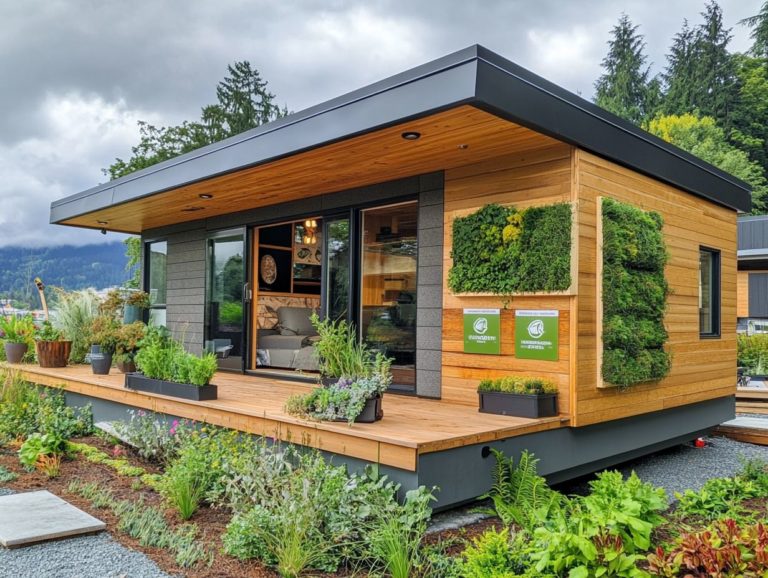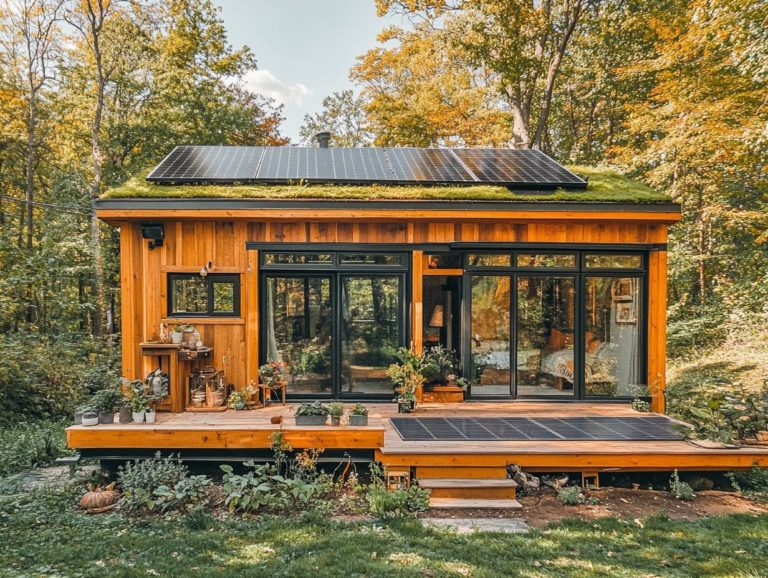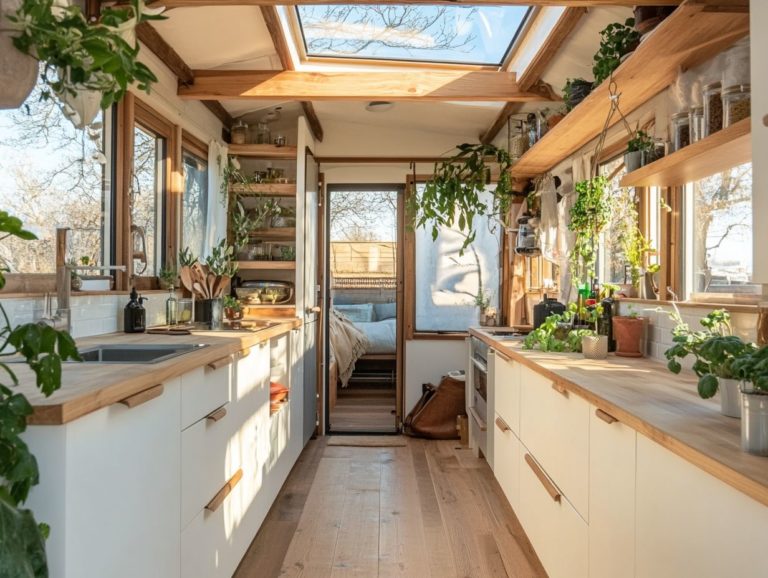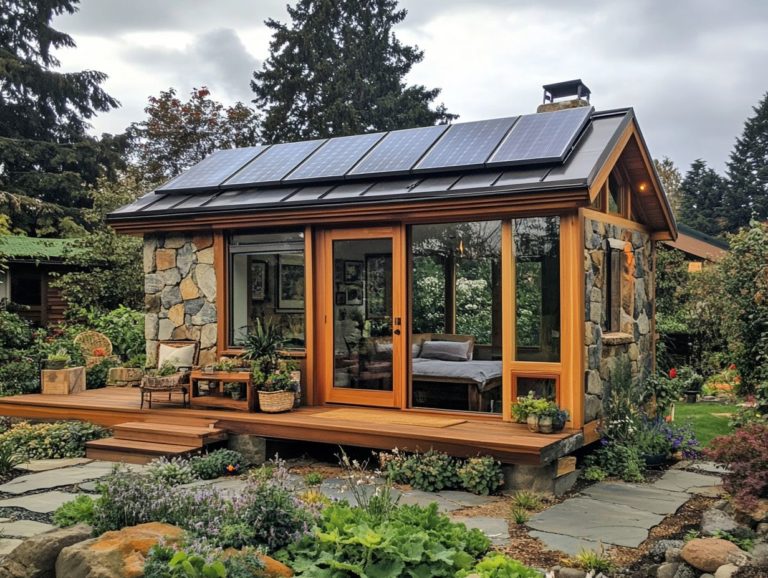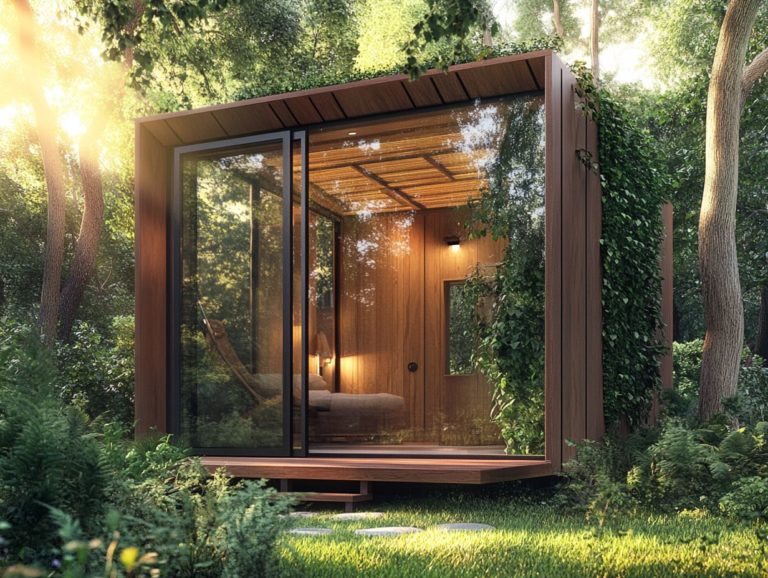How to Build a Tiny House Using Sustainable Practices
In a world that s placing greater emphasis on sustainability, constructing a tiny house presents an exceptional fusion of environmental awareness and financial wisdom.
This exploration delves into the myriad advantages of tiny living. It highlights everything from diminished ecological footprints to noteworthy savings.
You will also find valuable tips for maintaining a sustainable living lifestyle long after you ve settled in. Get ready to embrace your journey towards a greener and cozier home!
Contents [hide]
- Key Takeaways:
- Benefits of Building a Tiny House
- Designing Your Sustainable Tiny House
- Choosing Sustainable Materials
- Building Your Tiny House
- Maintaining a Sustainable Lifestyle in Your Tiny House
- Your Top Tiny House Questions Answered!
- What materials should I use to build a tiny house using sustainable practices?
- How do I ensure my tiny house is energy efficient?
- Can I use recycled materials to build a tiny house?
- What are some sustainable design elements I can incorporate into my tiny house?
- How can I make my tiny house more eco-friendly?
- Is it more expensive to build a tiny house using sustainable practices?
Key Takeaways:
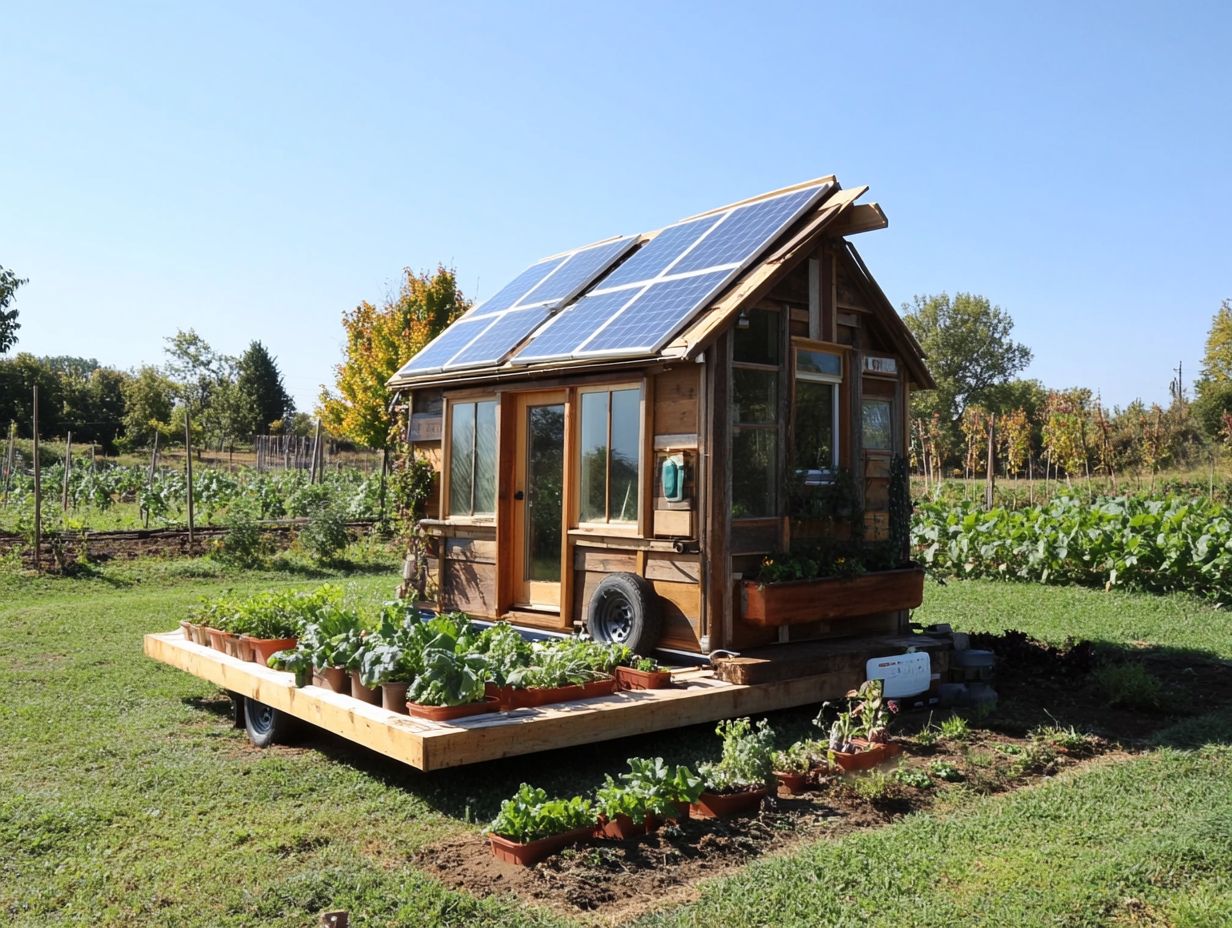
Defining Sustainable Practices
Sustainable practices are essential for modern living, especially within the tiny house movement. Eco-friendly solutions can dramatically reduce your carbon footprint.
In a world where environmental awareness is crucial, these practices enable you to embrace sustainable living while maximizing energy efficiency. You can achieve this through innovations like solar power, recycled materials, and optimizing natural light.
Concepts like greywater systems which recycle water from sinks and showers for irrigation and composting toilets that turn waste into nutrient-rich compost enhance the sustainability of tiny homes.
By incorporating energy-efficient designs, you can significantly lower your energy consumption. Utilize passive heating and cooling techniques, and materials like reclaimed wood and upcycled materials to add unique character to your space while lessening your environmental impact.
Installing water-saving fixtures and rainwater harvesting systems allows you to reduce water usage. Embracing these eco-friendly practices supports a minimalist lifestyle and nurtures a deeper connection with the environment.
Benefits of Building a Tiny House
Building a tiny house presents a wealth of benefits that span both environmental and financial aspects. The tiny house movement champions financial freedom by reducing housing costs, allowing you to redirect funds toward sustainable living practices.
Adopting this minimalist lifestyle helps you lower your carbon footprint and cultivates a deeper sense of environmental awareness. If you’re interested in maximizing your tiny home’s functionality, check out this guide on how to design a tiny house for year-round living. Tiny homes often feature eco-friendly elements that significantly cut down on energy consumption, aligning your living situation with your values.
Environmental and Financial Advantages
The environmental and financial advantages of living in a tiny house are monumental! They offer a unique opportunity to align your personal values with sustainable living. With energy-efficient designs and low-flow fixtures, tiny homes significantly reduce your carbon footprint.
You ll enjoy tangible savings on utilities and overall living costs. This paves the way for financial freedom to invest in further sustainable practices like solar power installations and eco-friendly building materials.
Studies show that tiny house dwellers can cut their energy bills by up to 50%. This illustrates a remarkable shift towards a more sustainable lifestyle. Your water usage can also decrease by nearly 30% compared to conventional homes, thanks to rainwater harvesting and efficient plumbing systems.
This not only conserves precious resources but also translates into lower mortgage payments, as many tiny homes cost less than half the national average home price.
Take a case study from Portland, for instance, where individuals living in tiny homes reported an average maintenance cost reduction of 60%. This allows you to redirect funds toward other essential life goals. These statistics beautifully underscore the dual benefits of economic and ecological prudence that come with the tiny living experience.
Designing Your Sustainable Tiny House
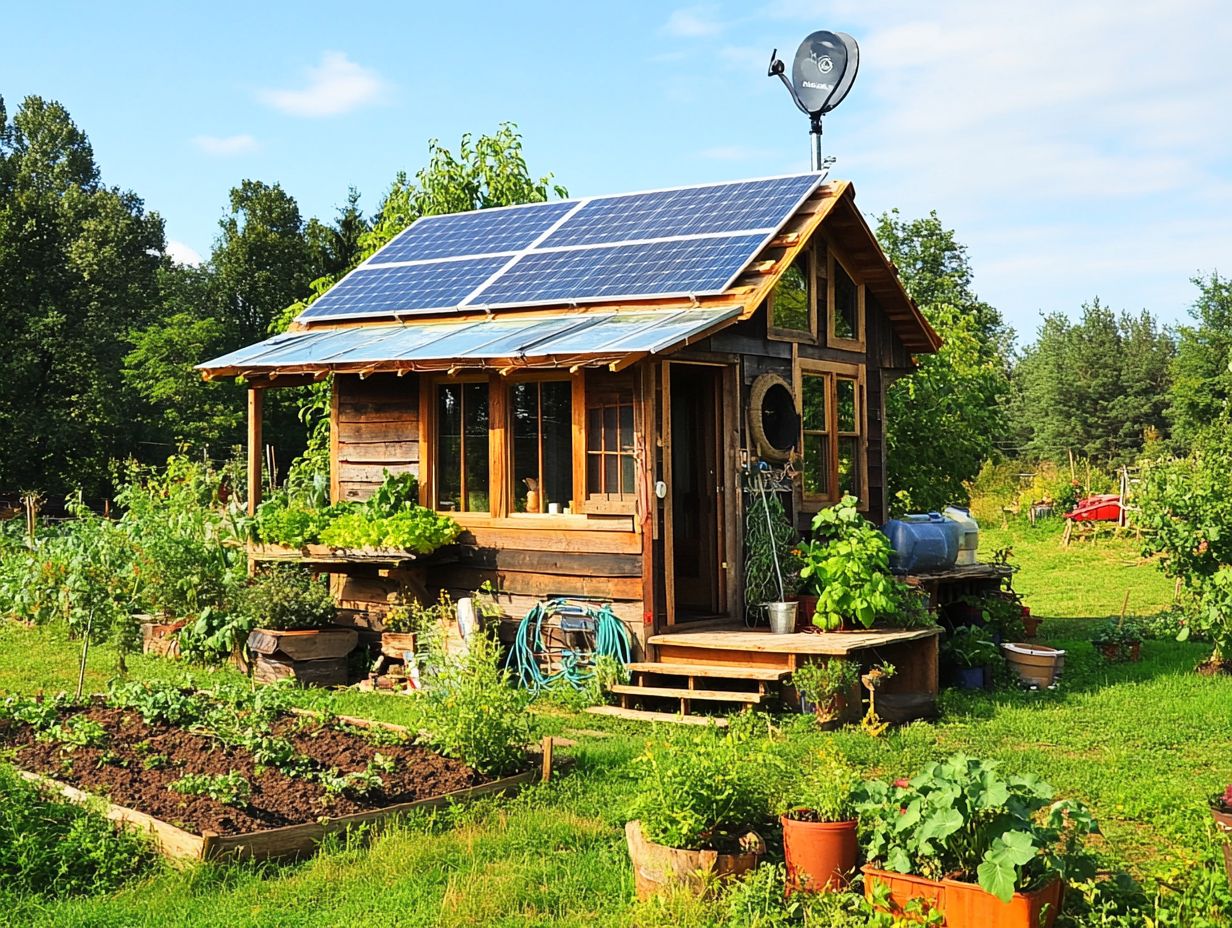
Designing a sustainable tiny house requires you to think about many things to create a space that embraces eco-friendly principles.
One key aspect is biophilic design, which brings more nature indoors and enhances natural light, creating a deeper connection between you and the environment.
Choosing energy-efficient insulation lowers costs and reduces your environmental impact. By opting for sustainable materials like reclaimed wood and eco-friendly finishes, you ll cultivate a minimalist lifestyle while enhancing the durability and aesthetic charm of your tiny home.
Key Considerations and Resources
When building a tiny house, several key considerations and resources are essential for achieving both functionality and sustainability in your design.
- Prioritize the selection of the right building materials, including eco-friendly options.
- Explore resources for financing and constructing tiny homes to streamline your process.
- Understand local zoning laws, as they can affect where and how you position your tiny home.
- Don’t overlook financing options like grants or loans tailored for sustainable construction.
- Organizations such as the American Tiny House Association provide valuable insights.
- For innovative ideas, consider incorporating nature into tiny house designs, which help connect your living space to the outdoors.
By utilizing these resources, you can create a supportive framework for a successful tiny house project!
Choosing Sustainable Materials
Choosing sustainable materials is crucial when constructing your tiny house.
Opt for materials like reclaimed wood, recycled metals, and natural fibers. These choices reduce waste and enhance the aesthetic charm of your tiny home.
Your selection of building materials plays a vital role in achieving energy efficiency and ensuring that your tiny house meets the standards of sustainable living.
Eco-Friendly Options for Construction and Finishing
Eco-friendly options for construction and finishing are plentiful, providing you with innovative solutions that elevate the sustainability of your tiny house. By incorporating features like solar power systems, paints that have low levels of harmful chemicals, and sustainable insulation materials, you not only enhance energy efficiency but also foster a healthier indoor environment.
When you choose eco-friendly finishes and construction techniques, you can significantly reduce your carbon footprint while reaping the many rewards of sustainable living.
Opting for reclaimed wood for flooring and cabinetry adds unique character to your space while minimizing waste. This beautifully combines aesthetics with environmental responsibility.
You can also integrate rainwater harvesting systems into your design, ensuring efficient water management and lowering your reliance on municipal sources.
By making these thoughtful choices, you can craft a tiny house that is visually stunning and promotes reduced energy consumption. Ultimately, embracing these eco-conscious methods allows you to achieve a harmonious blend of design and functionality, demonstrating that sustainability and beauty can coexist effortlessly in your tiny living space. For more ideas, check out this guide on how to create a multi-functional tiny house.
Building Your Tiny House
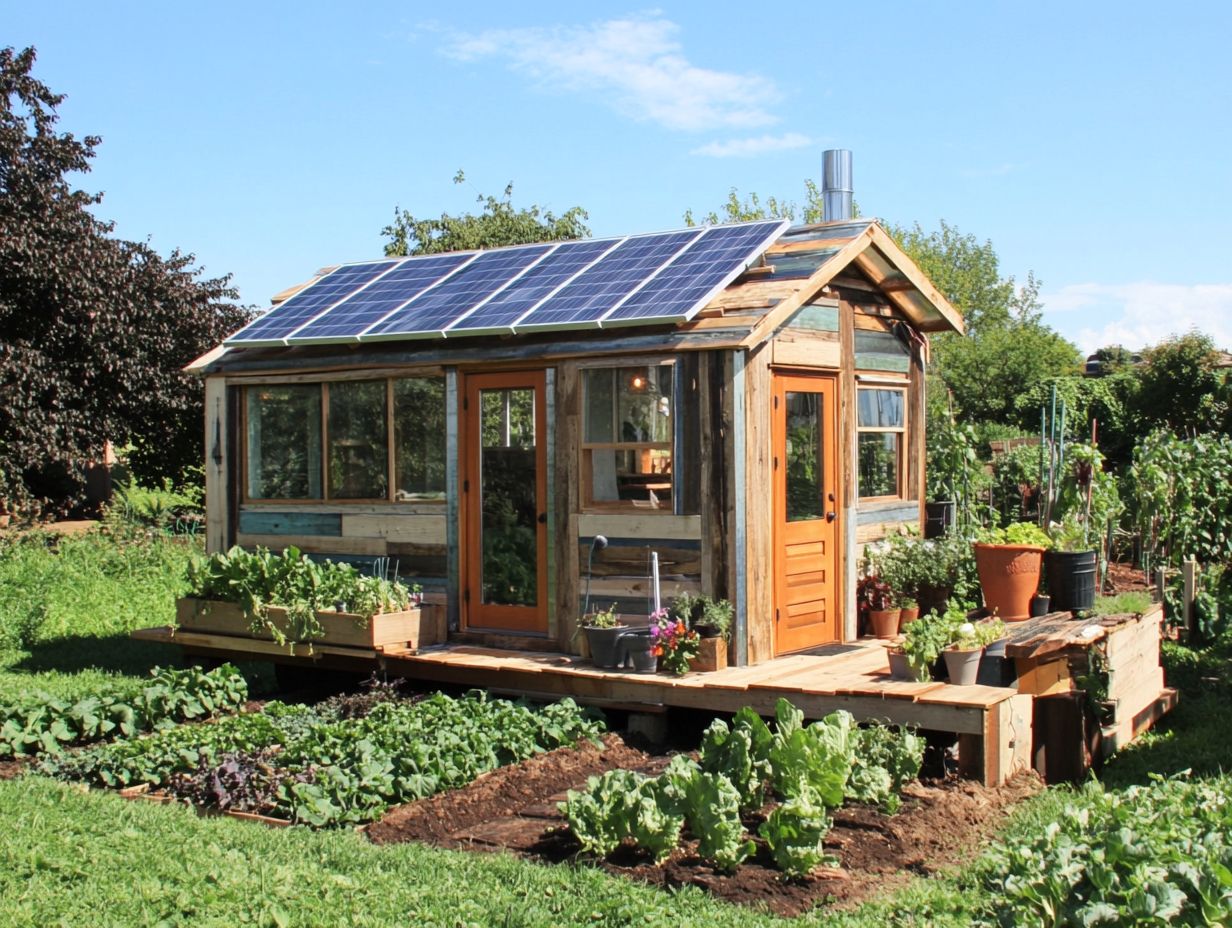
Building your tiny house is an exciting journey filled with possibilities! It demands meticulous planning, creativity, and a dedication to sustainable living. This journey involves multiple stages, from grasping local regulations to choosing energy-efficient designs that harmonize with eco-friendly building practices.
Armed with the right guidelines and resources, you can deftly navigate the intricacies of tiny house construction. Ensure that your new home embodies the principles of sustainability and sustainable design practices for tiny houses and minimalism.
Step-by-Step Guide to Construction
A step-by-step guide to constructing your tiny house will illuminate the path to creating a sustainable and efficient living space tailored to your needs. Begin with thorough planning and design; outline your vision, select appropriate building materials, and consider energy-efficient features like insulation options and solar power systems.
Approach each phase of the construction process with the intent to maximize sustainability and minimize your environmental impact.
In the initial phase, securing the necessary permits is crucial. This lays the foundation for complying with local regulations. Once you have the green light, framing begins not just erecting walls, but ensuring they are designed for optimal energy efficiency.
When it comes time to install utilities, prioritize sustainable options like low-flow water fixtures and renewable energy resources, which contribute to a reduced carbon footprint.
As you progress to the finishing touches, carefully consider the finishing materials and paint you choose. Opt for eco-friendly products that enhance indoor air quality and minimize environmental harm.
Throughout the process, sourcing sustainable materials from local suppliers not only lowers transportation emissions but also fosters a responsible building approach.
Maintaining a Sustainable Lifestyle in Your Tiny House
Maintaining a sustainable lifestyle in your tiny house is crucial for unlocking the full potential of eco-friendly living, while also ensuring your long-term satisfaction and efficiency.
Key elements to consider include the thoughtful implementation of systems like composting toilets and systems that recycle water from sinks and showers for landscaping. These significantly enhance water conservation and minimize waste.
Regular maintenance of energy-efficient features, such as solar panels and low-flow fixtures, is essential for preserving the sustainability of your home and reducing overall energy consumption.
Start implementing these systems today for a brighter, greener future!
Tips for Sustainable Living and Maintenance
Implementing practical tips for sustainable living and maintenance can greatly enhance your experience in a tiny house, enabling you to maximize energy efficiency and embrace environmental consciousness.
Simple practices, such as using low-flow fixtures and keeping an eye on your energy consumption, play a crucial role in living a more environmentally friendly life.
Regularly maintaining sustainable systems, like composting toilets and greywater systems, which recycle water from sinks and showers, ensures they perform optimally and last longer. This seamlessly integrates sustainability into your daily routine.
In addition to these practices, adopt habits like using energy-efficient appliances and making the most of natural light to further reduce your electricity use. Establishing a routine to check insulation and seal any leaks can lead to significant savings on heating and cooling costs.
By fostering a culture of mindful consumption choosing local products and minimizing waste you encourage a community-centric approach to environmental stewardship.
By incorporating these actionable steps into your everyday life, you not only enhance your living space but also make a positive contribution to the planet’s well-being, especially when considering the best materials for tiny house construction.
Your Top Tiny House Questions Answered!
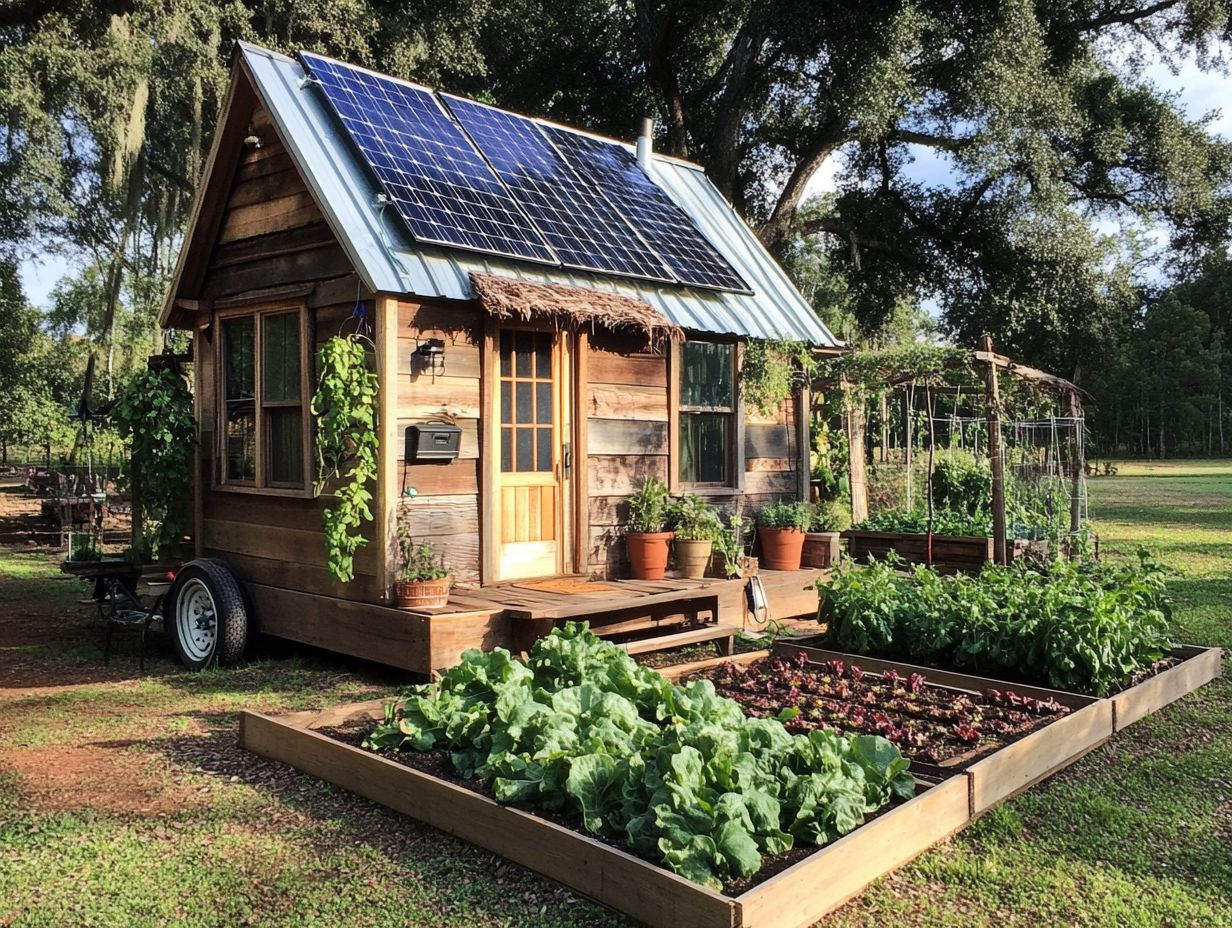
What materials should I use to build a tiny house using sustainable practices?
There are a variety of sustainable materials you can use, such as reclaimed wood, recycled metal, and natural insulation like sheep’s wool or hemp. It’s important to research and choose materials that have a low environmental impact and are also durable for long-term use.
How do I ensure my tiny house is energy efficient?
Several ways exist to make your tiny house energy efficient. You can install solar panels, use LED lighting, and choose energy-efficient appliances. Proper insulation is also crucial to reduce heating and cooling costs.
Can I use recycled materials to build a tiny house?
Absolutely! Using recycled materials is a fantastic way to incorporate sustainability into your tiny house build. You can repurpose materials like old doors, windows, and flooring to give them a new life.
What are some sustainable design elements I can incorporate into my tiny house?
Incorporate sustainable design elements such as passive solar design, rainwater harvesting systems, and composting toilets. These features can significantly reduce your environmental impact and make your tiny house more self-sufficient.
How can I make my tiny house more eco-friendly?
Beyond using sustainable materials and energy-efficient design, you can also incorporate a small garden for growing your own food. Using non-toxic and natural cleaning products, as well as choosing eco-friendly furniture and decor, further enhances eco-friendliness.
Is it more expensive to build a tiny house using sustainable practices?
While some sustainable materials or features may have a higher upfront cost, building a tiny house using sustainable practices can actually save you money in the long run. By reducing energy and water usage, you ll enjoy lower utility costs! Moreover, by choosing durable materials, you’ll save time and money on repairs!

